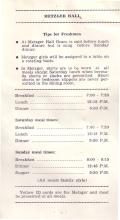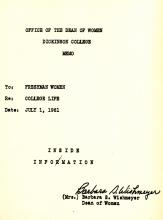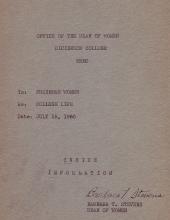Anti-Bifurcation Act
The Anti-Bifurcation Act at Dickinson College prevented women from wearing "bifurcated garments, elongated or exposed shirt-tails or any other freakish costumes" when not in the privacy of their own rooms. This was to prevent "unfavorable public criticism, directed against both the women of the college and the college itself."Â This Act was to be in effect from the time of its enactment (1944) until "an indefinite, far-future date."









